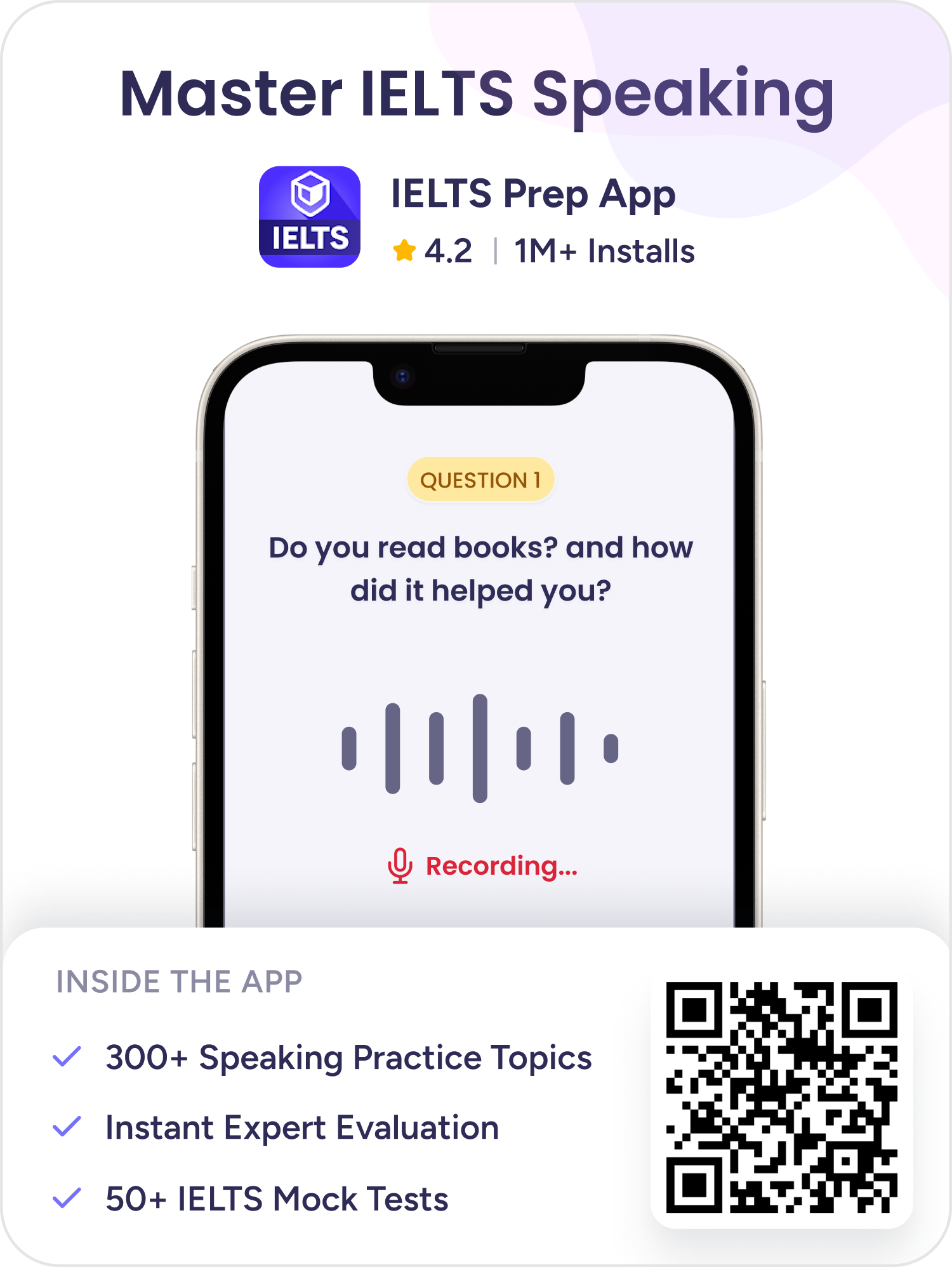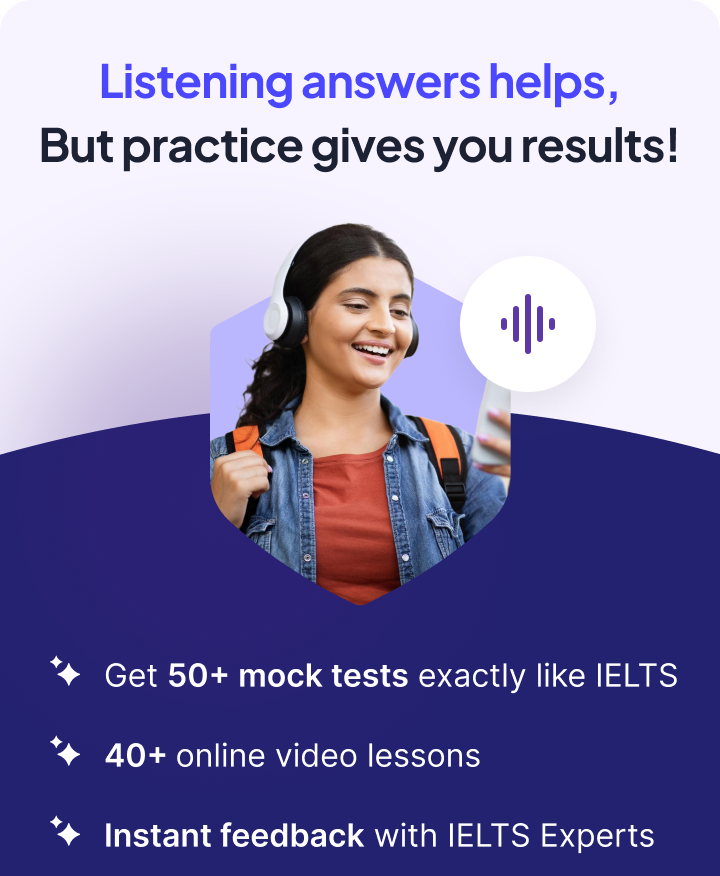Describe an article about health that you read.: IELTS Speaking Cue Card
You should say
- Where & when did you read it?
- What was it about?
- How was it helpful?
25 unique answers with expert feedback
Band 6-7
00:00
/
00:00
Follow up questions
Follow up questions
What are some common misconceptions about health among young people?
How can young people be encouraged to adopt healthier lifestyles?
What role does mental health play in physical health for young individuals?
Band 6-7
00:00
/
00:00
Follow up questions
Follow up questions
What specific health care issues were mentioned in the article?
How do you think individuals can contribute to improving health care?
Why do you believe health care awareness is important?
Band 6-7
00:00
/
00:00
Follow up questions
Follow up questions
What specific exercises were mentioned in the article?
Why do you think the article lacks proper research?
How do you usually keep yourself informed about health topics?
Practice other cue cards
Band 6-7
00:00
/
00:00
Follow up questions
Follow up questions
What health topics interest you the most?
How do you stay informed about health-related news?
Why do you think health articles are important?
Band 6-7
00:00
/
00:00
Follow up questions
Follow up questions
Why do you think hydration is important for overall health?
What other health articles have you found interesting?
How has your routine changed since you started drinking more water?
Cue 1:Where & when did you read it?
- Begin by mentioning the source of the article, such as a magazine, newspaper, or online platform.
- Specify the time frame, like the month or year, and the context in which you read it.
Example
I read an interesting article about health in the 'Health and Wellness' section of The Times of India last month. I was relaxing at home on a Sunday afternoon, looking for something informative to read.
Cue 2:What was it about?
- Summarize the main topic of the article clearly and concisely.
- Highlight any key points or findings that stood out to you.
Example
The article discussed the importance of maintaining a balanced diet and regular exercise for overall well-being. It emphasized how small changes in our daily routines, like incorporating more fruits and vegetables, can significantly impact our health.
Cue 3:How was it helpful?
- Reflect on how the information from the article influenced your thoughts or actions regarding health.
- Mention any specific changes you made or plan to make based on what you learned.
Example
Reading this article was quite helpful as it motivated me to start a weekly meal plan. I began including more nutritious foods in my diet and even joined a local gym to stay active, which has improved my energy levels.
Conclusion
- Wrap up by reiterating the significance of the article in your life.
- Mention how staying informed about health topics can benefit everyone.
Example
In conclusion, this article not only educated me about healthy living but also inspired me to take actionable steps towards better health. Staying informed about health topics is crucial for everyone, especially in today's fast-paced world.
Following this structure will ensure you cover all the essential points while providing a clear and engaging response to the cue card topic.
Tips to answer this Cue Card
1: Being Vague or General
Avoid giving vague answers that lack detail. Being too general can make your response uninteresting and fail to showcase your language skills.
Tip
Provide specific details about the article, such as its title, main points, and your personal reflections to make your answer more engaging.
2: Ignoring the Cues
Neglecting the specific cues can lead to an unstructured response. This may cause you to miss important aspects of the topic.
Tip
Make sure to address each cue clearly: where and when you read it, what it was about, and how it was helpful.
Lack of Personal Connection
Failing to connect the article to your personal experiences can make your answer less relatable and impactful.
Tip
Share how the article relates to your life or health practices, which will make your response more personal and memorable.
IELTS Cue Cards asked last week
Reported by Leap students who gave IELTS
All Answers
Here are all the answers by real-users practicing speaking for IELTS Cue Cards on our IELTS Prep App.
Band 6-7
Band 6-7
Band 6-7
Band 6-7
Band 6-7
Band 6-7
Band 6-7
Band 6-7
Band 6-7
Band 6-7

Explore
473 Cue Cards

Personal Experience
121 Cue Cards

Describing People
66 Cue Cards

Travel
47 Cue Cards

Personal Development
45 Cue Cards

Hobbies/Interests
44 Cue Cards
Environment/Culture
39 Cue Cards

Tech/Media
27 Cue Cards

Education/Work
19 Cue Cards

Social Issues
19 Cue Cards

Describe An Object
16 Cue Cards
Business/Shopping
16 Cue Cards

Food/Cooking
8 Cue Cards
Fashion
6 Cue Cards
Get the IELTS Prep App
4.2
1M+ Installs
Get the IELTS Prep App
4.2
1M+ Installs
Get the app link on your phone
Or download app from





